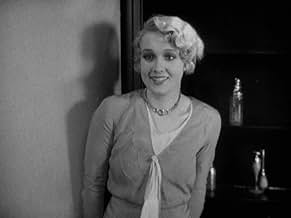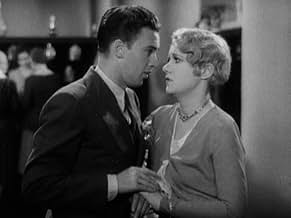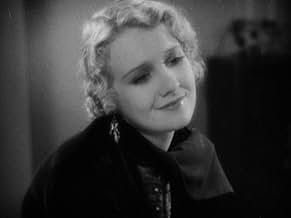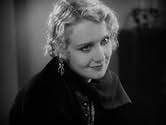Añade un argumento en tu idiomaThree department store employees, Connie, Franky, and Jerry, share an apartment together in New York City. Despite Jerry's pragmatism, Connie and Franky pursue wealthy men for financial gain... Leer todoThree department store employees, Connie, Franky, and Jerry, share an apartment together in New York City. Despite Jerry's pragmatism, Connie and Franky pursue wealthy men for financial gain, leading to disappointment and heartbreak.Three department store employees, Connie, Franky, and Jerry, share an apartment together in New York City. Despite Jerry's pragmatism, Connie and Franky pursue wealthy men for financial gain, leading to disappointment and heartbreak.
- Dirección
- Guión
- Reparto principal
- Premios
- 3 premios en total
- The Detective
- (as Robert O'Connor)
- A Mannequin
- (as Wilda Mansfield)
Reseñas destacadas
Our Blushing Brides was the third and last of the "Our" series of films, which started in 1928 with the success of Our Dancing Daughters. It is also the best of the three, with an intelligent script, fabulous art deco sets, and terrific performances.
Joan Crawford stars as Gerry, who works in a department store and lives in an apartment with three other young women, played by Anita Page and Dorothy Sebastian. Each of these women is being pursued by rich men.
Sebastian is out for money. She marries a rich man on their first date, after he promises her that she will never have to wake up to an alarm again. Page is in love with the wealthy son of the department store owner, who is in love with her but will not marry her. Crawford is disillusioned and does not trust men. She is the most independent of the three, but even she has trouble resisting the advances of a young and handsome Robert Montgomery, also a son of the department store owner.
When Crawford discovers Montgomery's intentions are motivated purely by lust, after being lured to his art deco tree loft for a midnight rendezvous, she walks out on him and keeps him guessing. Meanwhile, Page and Sebastian find out their men are cads, using them for sex and going out on them behind their backs. Sebastian's husband is arrested, and Page's beau marries someone else, prompting her to swallow poison.
Crawford, in a fit of rage, rushes to the wedding and orders Page's former beau to return to her until she gets well. Montgomery, sensing the reason why Crawford distrusted men, loves her all the more for it. But what will become of Page and Sebastian, and will Montgomery finally be the man Crawford can trust and love? This is an excellent pre-code, with moments of funny comedy and tearful drama. If you want to see a set of actors at their vibrant and youthful best, you have to give this little-known film a chance.
Though the plot developments are contrived even by the standards of the day, this is not a bad entertainment but it suffers midway when the progression of events grinds to a halt in favor of an elaborate but not very imaginative fashion show, ostensibly to impress female moviegoers, or perhaps to show off Crawford's beautiful body and skill at posing. She gets the star treatment here, frequently in dazzling close-up. Sometimes her facial expressions veer a bit into semi-dementia, but she restrains herself admirably. Anita Page does very well as the innocent victim of the thoughtless Hackett. Sebastian's role is in the wan mode of ZaSu Pitts; she has an amusing drunk scene. Montgomery, born to wear white tie and tails, must have gotten a big career boost with this one.
If nothing else, this film can probably boast the most impressive tree house ever created for the screen.
The cast is wonderful here and Joan has lost her stagy silent mannerisms and you can just see a glimmer of the Crawford that was to come. The Depression was on, but you wouldn't know it by Joan (or this character), who persevered in spite of everything. Joan was the most ambitious actress ever to step tootsie in Hollywood and seems to have been propelled along by sheer force of will, but she did have real acting talent, and this movie displays it. Bob Montgomery plays another of his dependable rich-boy roles and looks great in a tuxedo, chatting idly about Oyster Bay. At one point, Jerry won't make out with him, so he says "Let's have a cigarette," like he just invented it. (Don't you miss smoking? I do). What a great line.
Will Jerry and her pals triumph or will they be crushed by love that was just an illusion? Watch and find out!
This film is quite enjoyable, I like the interrelationships between the three girls - there's plenty of chemistry and camaraderie there. Robert Montgomery is a doll, his slim self handsomely decked out in tuxedo, white tie, and tails (ooh la la) - he plays his playboy-like part expertly. Joan Crawford acts up a storm in this, with a full range of emotions - and gets to show herself off in slinky outfits and barely-there lingerie as well (which she REALLY seems to enjoy doing!). The film includes a fun fashion show, complete with foppish Parisian dress designers, and lots of capes, drapes, ruffles, and deco look hats.
This is a pre-code film, and despite the above-mentioned problems, they're always interesting to watch. This one had to do with giving in to one's baser instincts (having sex) for money and the good life. This is 1930, and America was still preoccupied with class distinctions. Gerry refuses to give in to Tony, but her roommate Connie (Anita Page) is kept by his brother David. Franky (Dorothy Sebastian) marries a big talker.
Two scenes stick out as a sign of the times - outside Gerry's apartment building on a hot summer night, the street is teeming with kids playing, an ice cream cart, and people sitting on the stoop. A very realistic portrayal of cities back then. With no air conditioning and no television, people sat outside for the air and to talk with their neighbors. Social interaction, not social networks, Internet, and cable, provided their entertainment.
The second striking thing was the radio description of an engagement of a couple from socially prominent families. I remember seeing an old Vogue magazine where an woman engaged to some sort of royalty got a full page portrait. Not uncommon.
For anyone who only knows the hard-faced Joan Crawford of later years, this movie will serve as a revelation. Made for movies with those huge, mesmerizing eyes, beautiful face, and trim figure, Crawford shines here. At times she sounds like she's sporting some sort of affected accent, though I don't know why. Page and Sebastian are also very good in their roles. Montgomery is underused - he was more than a dashing leading man - but he looks great and does the role well.
All in all, worth seeing for the young Crawford and a look at life in 1930 for shop girls.
¿Sabías que...?
- CuriosidadesJerry tells her malingering roommate, "Snap out of it, Lady Vere de Vere." This lady was the subject of a poem by Alfred Lord Tennyson. She was the haughtiest and coldest lady in the peerage, and the one with the noblest title. Her name has become an ironic way of referring to someone who is acting snooty.
- Citas
Mrs. Hinkle, the Landlady: Mr. Carter, third floor front. He's a process server. That's a real influential job. He thinks you're pretty nice. He'd like to take you out.
Geraldine 'Gerry' March: No, thank you, Mrs. Hinkle. You see, I'm avoiding process servers this season
- ConexionesFeatured in Joan Crawford: The Ultimate Movie Star (2002)
- Banda sonoraThe Wedding March
(1843) (uncredited)
from "A Midsummer Night's Dream, Op.61"
Written by Felix Mendelssohn
Played during the opening and closing credits
Selecciones populares
- How long is Our Blushing Brides?Con tecnología de Alexa
Detalles
- Fecha de lanzamiento
- País de origen
- Idioma
- Títulos en diferentes países
- Our Blushing Brides
- Localizaciones del rodaje
- Empresa productora
- Ver más compañías en los créditos en IMDbPro
Taquilla
- Presupuesto
- 337.000 US$ (estimación)
- Duración
- 1h 42min(102 min)
- Color




































